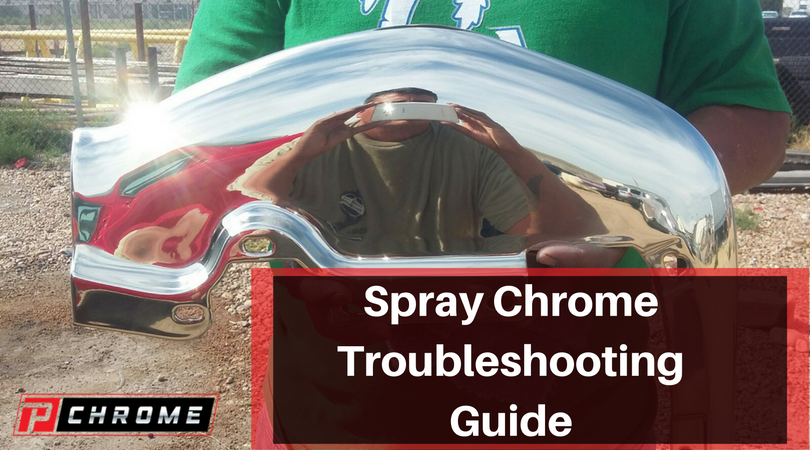
Troubleshooting Common Spray Chrome Issues
PChrome chrome spray is an excellent choice for your chroming projects. You may encounter some basic problems when you first begin chroming. We have compiled this troubleshooting guide so that you can avoid some common mistakes and obtain the beautiful finish that you want.
When the base coat is taking too long to cure
The time it will take your base coat to cure will depend on a number of factors. If your shop is too cool, it will take much longer to cure. If you have applied a thick coat of the base, it will also take longer to cure. Try applying your base coat in a thin layer using a finely atomized mist instead of applying a thick layer.
Areas on your part are not accepting the metal finish
If you do not wet your part enough, there may be areas that do not accept the metal finish. You might have noticed that the water was breaking when you sprayed the SR solutions on the part. For large parts, you may need to repeat your applications of the W sensitizer followed by your D solution and rinsing with deionized water several times before metalizing. If your D solution is too old, this problem can also happen. The D solution lasts for about six months. Finally, if there is contamination on the part’s surface, the metalizing layer may not take. This may include latex residue, overspray from other projects or fingerprints.
Getting a rainbow effect when you apply your top coat
This is caused by not allowing enough time for the base coat to cure before metallizing your part. Either allow more time for the base coat to cure or use a heat curing method.
Yellowing when the top coat is applied
When you apply your top coat, a small amount of yellowing should be expected. You can easily neutralize this effect by adding violet to the top coat solution. If you are getting a lot of yellowing despite neutralizing, there may be several causes. The metal layer may not have deposited sufficiently. Before moving on to the top coat, make certain that your metal layer is very bright. Thinner metal layers may cause yellowing when the top coat is applied. If the humidity level is above 60 percent in your shop, yellowing may occur. The process should not be attempted until you have the humidity under control.
The metal layer is slow to plate
The reaction that causes the plating is sensitive to heat. If you use cold water, the process can be delayed. This may also be caused by impurities in your water. The plating process will not work if your water contains as little as 5 parts per million of solids. Finally, you should look at how old your R solution is because it has a shelf life of between six and nine months.
With troubleshooting and following these steps, you can avoid some common issues. Soon, you will be chroming parts like a professional. For additional help or to order your kit, call PChrome today.
